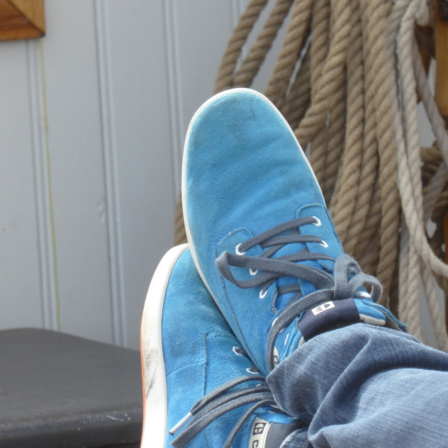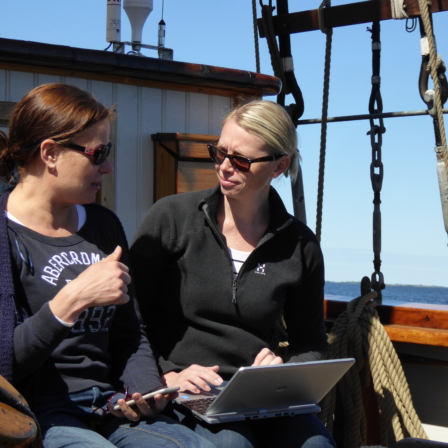Using a sailing ship that specialises in youth work for overnight travel with adult passengers is a rare occurrence for me. When Sitra asked us for a ride to Almedalen, where they were headed to join discussions on climate change mitigation solutions with Nordic mayors and municipal leaders, the idea of using carbon-neutral transport felt so great that we jumped at the chance to help make it a reality.
During our voyage to Almedalen, the wind was not as favourable as we had hoped; we were able to use the sails for one third of the way and ended up using 250 litres of diesel. As such, this is not a bad result for a sailing ship the size of Albanus, but the optimisation of vessel performance is a passion of mine. When we returned from Almedalen, the situation was the reverse: we sailed two-thirds of the way, with top speeds of more than eight knots. And our consumption of diesel amounted to just 150 litres on the way back. With a less strict time table, we would have been able to use the sails even more. Had we made this return trip only using the ship’s engine without thinking about fuel consumption, our total fuel consumption would have amounted to nearly one thousand litres of diesel.
I confess. I am addicted to sailing. My first time sailing was on my uncle’s boat at the age of six months. Inspired by my experiences with sailboat racing as a teenager, I went to work on sailing ships. Studies at the polytechnic lost out and the sea won: I became a sea captain. My first time as captain of a sailing ship was at the age of 18, commanding the ketch Feie, which had been converted from a traditional Norwegian sailing trawler. I have been the master of Albanus for more than 15 years now.
While my love of sailing ships and youth work draws me back to the deck of the Albanus every summer, it’s not enough to make a living. That is why sailing is a part-time job, alongside my civilian profession. However, without my background as a racing sailor and in sail training, or all my years of experience at sea, I would not be able to teach the masters of the world’s largest cruise ships how to improve the energy-efficiency of their vessels.
I have been part of Eniram almost from the beginning, since 2005. Our company develops various systems and solutions for reducing the emissions of vessels. My job is to help achieve fuel savings and emission reductions also outside these systems, for example by providing training for masters of large cruise ships in optimising vessel performance. This makes a huge impact, because reducing fuel consumption by one tonne means reducing CO2 emissions by three tonnes. Eniram’s products currently help vessels around the world to improve their fuel efficiency and save some 200 tonnes of fuel every day.
As a captain, the best part of my day is when I get to turn off the engine, put up the sails and enjoy the silence and the power of the wind. But the greatest moments are when I see young people in sail training make a personal growth spurt.
While our goal for Albanus is optimised fuel consumption, it is not 100% fuel-free sailing – except whenever time is not of the essence. We are currently planning the building of a new ship replica, to be put into use in 2024. The ship will have an integrated hybrid propulsion system as backup, based on the same principles as hybrid vehicles. One way to reduce emissions even further would be, for example, placing solar panels on the ground at ports in order to generate electricity for charging the ship’s batteries during each port visit. The future belongs to renewable energy.
Author: Tero Ilus








Recommended